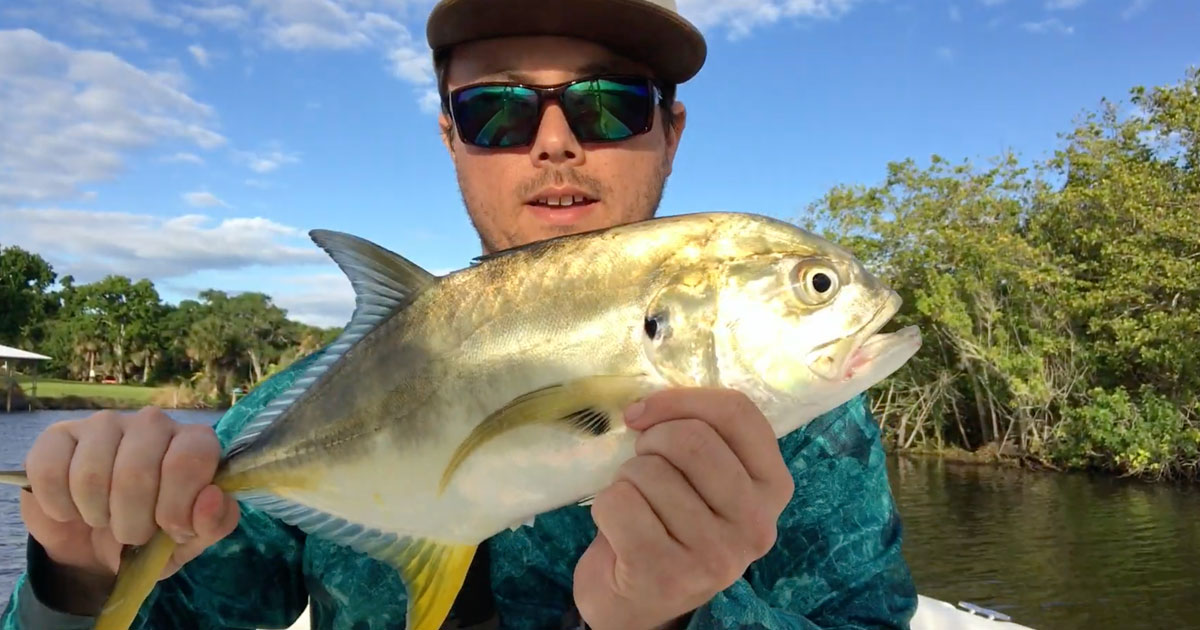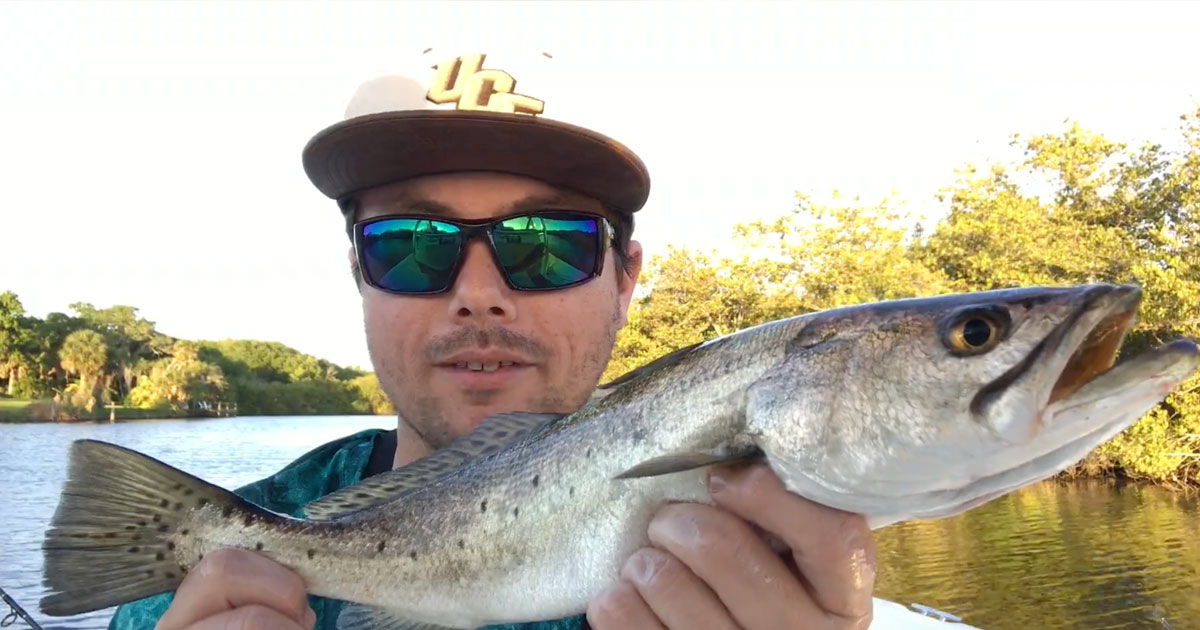
Last trip in the Eau Gallie River, I saw schools or fun sized jack crevalle and rogue tarpon set off large bait pods near the US1 bridge. I ended up catching a few jacks but no tarpon despite seeing multiple roll near the boat. A nearby local fisherman saw my frustration missing a tarpon and reaffirmed “they are always back in here, and no one ever catches them.” Only having caught one tarpon before, flashbacks of the adrenaline rush motivated me to rise to the challenge.
The EGR has been one of my favorite areas to be on the water this spring, not only for how consistent the fishing has been, but for the scenery and diversity in wildlife as well. During this trip alone, I came across dolphins, manatees, cast netted monster striped mullet, and even came across a lone alligator. Talking with a local enjoying a beverage on his dock, I asked him “how far up can you go to the spillway”? Which led to a broadening conversation of how he has lived there for thirty years, and has never seen as much wildlife in the river since they have finished the dredging project. He also provided tons of local knowledge of the area and told me that there is a crab buoy marking how close you can go to the spillway. This bouye is about six hundred yards from the spillway itself, and is easy to miss. The channel goes from 6-9ft to less than 2 feet almost like a wall. You can see at the end of the video for more details.

As far as tactics go for this video, I was using a 7ft heavy action rod with 30 lb braid and 50 lb fluorocarbon. My favorite bait for tarpon is rigging a live finger mullet on a 2 or 3/0 circle hook. I typically pitch the bait around the mangroves and let it sit for minute or two before reeling tight and twitching the bait. This will cause the mullet to liven up and keep moving. If I do not attract any strikes within a few minutes I will recast. Since I do not currently have a trolling motor and temporary anchor most of the time, I will typically pitch a live bait off the back of the boat as well. The nice thing about circle hooks is you can leave the pole in the holder and the hook will set itself in the corner of the fishes mouth. I typically will use baits like croakers for this “dead stick” method as they do not typically swim around as much as mullet would, and is less likely to tangle or get wrapped up around something. You can see from the video this is how I caught the jack crevalle.
The next fish I caught on the day was a nice sea trout while pitching a mullet at the same point I almost caught that tarpon, and have continuously seen snook poppin on bait in the mangroves. When I hooked into the fish at first, I wasn’t expected it to be a seatrout, and I felt the hook was not solidly set into the fishes mouth. This was probably because seatrout have soft mouths and I was using heavy gear. I felt bad about how the fish landed due to the flip into the boat, but I was happy when the fish was able to easily swim away. This trip was not a very “fishy” day but happy with the overall quality of fish, and enjoyed another great day on the water. As for now, I am still in pursuit of the elusive EGR Tarpon. Until next time, tight lines!


Well done Alex, that’s great info you are sharing. Thank you!
Alex, nice video of the EGR. I haven’t fished there for a couple months, they were dredging it when I was there. I will have to check it out soon. Looks like more fish since I was there.
Very cool vid. Currently renting a house on Elbow Creek. Seeing a metric butt ton of mullet, and have caught some small snook on 3 inch white paddle tails. The owner of the house said the dredging has helped a great deal with the wildlife and navigation.
Thanks Col. Angus! That sounds like a cool spot, I imagine the housing value along the EGR is going to increase big time now that it’s more navigable. I haven’t tried the south side of the river by you yet, I’m not sure if they have finished dredging that section yet. There is always so much bait back in that river, I feel like its only a matter of time before more predator fish find their way back there. I caught mullet ranging in sizes from 3 inches all the way up to 16 inches back there. Keep me posted on how your fishing adventures go in the EGR!
Awesome… The legend of the Eau Gallie River Tarpon grows! It looks like you’ve inspired others to seek out the elusive tarpon here and I myself am ready to hop on the band wagon. Put in the time and you’ll land that fish, eventually!
Great to see other people catching nice sized snook out of there searching for tarpon as well. Went out there yesterday and have seen an increase of fishermen for sure. Still a lot of bait back there, and I’ve seen a few snook, but no tarpon sightings this weekend. Did manage to see some cool wild parrots, cardinals, and nesting egrets. Going to go back out during this week, the weekend has been so windy!
Next time smash the Mullet’s head rig it and dead stick it on the bottom. Catch them with soft plastics, sweep, drop to bottom and hold on.
Definitely going to have to try this next. I’ve also seen someone make a dead/live bait sandwich on a larger hook for tarpon too. Smash one, hook it, and rig a live one on there too. Might try that as well.
A week late, but had some friends over the house last Sunday am.
They caught a ton of catfish. The 7yr old gal caught a mangrove snapper, and at the same time one of the boys hooked a good sized snook. All on live shrimp.
While trying to get the snapper taken care of, the elusive tarpon made us very aware of it’s location and made a quick meal of the snook and snapped the poor kids line. It was all in all about 45 secs of pure fishing chaos. lol
Abridged version: Tarpon be here!